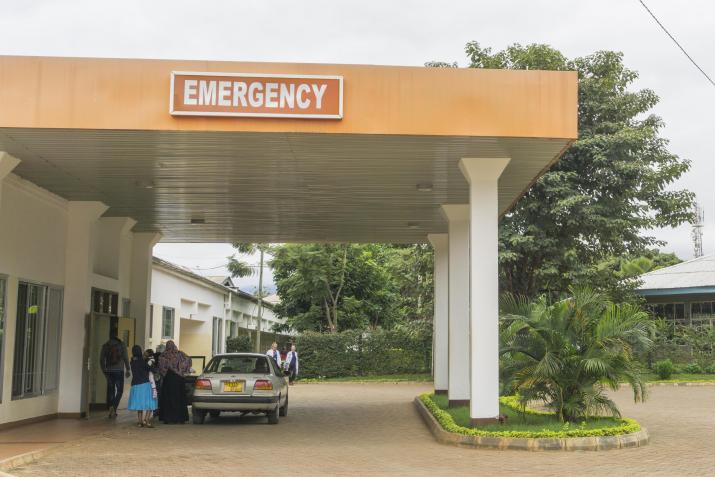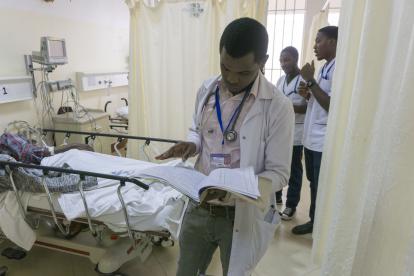
Entrance to the Emergency Department at Kilimanjaro Christian Medical Centre in Moshi, Tanzania
Published January 24, 2023, last updated on January 25, 2023 under Research News
When Sophie Galson, M.D., began studying emergency care at the Kilimanjaro Christian Medical Centre (KCMC) in Moshi, Tanzania, she heard from nurses about a recurrent problem. Patients with chronic high blood pressure were showing up at the emergency department instead of going to primary care or cardiology specialists.
“Some patients think if they have high blood pressure, it’s transient, and that’s not always the case,” says Galson, an assistant professor of surgery and an affiliate with the Duke Global Health Institute.
But it’s not just patients who are confused about how to manage hypertension, a growing issue in many low-income countries. Some doctors, too, don’t realize the condition requires lifelong treatment, Galson says.
Galson describes those misconceptions in a study published Jan. 6 in PLOS ONE. The qualitative research points to fears and lack of understanding that could contribute to patients not accessing or following through with hypertension care, underscoring the challenges for countries like Tanzania in dealing with a rising prevalence of hypertension and other chronic diseases.

A doctor sees a patient in the...
While rarely seen in developing countries a few decades ago, heart disease and hypertension have been spiking in places like northern Tanzania, where it’s estimated that 28 to 40 percent of the population has hypertension. The World Health Organization expects more than 23 million deaths annually related to heart disease by 2030, with much of the increase coming in low-income countries.
Although Tanzania has increased hypertension screening and testing, gaps in care remain. Research in 2018 found that three fourths of outpatient facilities lack basic equipment such as blood pressure cuffs, and many are unprepared to handle hypertension screening and treatment. Some rural parts of the country lack primary care doctors, but even when primary care is available, patients sometimes bypass rural clinics and instead travel to hospitals like Moshi’s KCMC, Galson says.
“Many people think they’ll get better care by going to KCMC,” she says. “And there were some barriers to outpatient facilities where transportation was challenging, but not necessarily the cost of the care or medicine in this study.”
At KCMC, which serves a population of more than 15 million, doctors are often too busy to dedicate much time to patients, especially in the emergency department. That can lead to a lack of continuity in care and followup, Galson says.
“Some patients didn’t feel heard by their providers, which is really unfortunate,” she says. “I feel if the provider had more time to build a therapeutic relationship with a patient, some of these issues could be avoided.”
Galson’s study included interviews with KCMC emergency department physicians and discussions with three focus groups of patients with hypertension. Roughly 63 percent of patients interviewed in the study were already taking medication for high blood pressure.
Galson says the next steps in research would focus on possible interventions to improve blood pressure control. Some ideas include educating patients and doctors to better understand hypertension, ways to incentivize patients to receive care closer to home, bringing more doctors to rural areas, and incorporating mobile technology into care.
She adds that the patients who felt the most control over their health tended to have strong support systems from family and others who helped keep them on track with treatment.
“They had family members who were engaged with their care, reminding them to take medications and it created proactive behaviors,” she says. “[Hypertension] is a global epidemic, but it can be improved with increased education for providers and patients."


